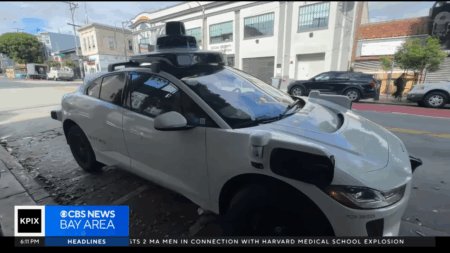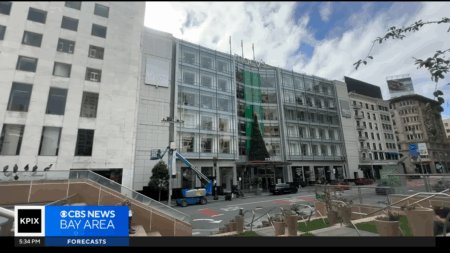Strengthening Workplace Security: Lessons from the Recent NYC Shooting
Heightened Security Concerns Among Urban Businesses Following NYC Incident
The recent shooting in New York City has reignited urgent discussions about the safety of employees within metropolitan office settings. Business leaders across the city are now critically evaluating their existing security frameworks, acknowledging that many current protocols may fall short in addressing unpredictable threats. Security providers have reported a significant surge in requests for enhanced access control systems, improved emergency communication tools, and increased on-site security personnel deployment.
Primary areas of concern include:
- Effectiveness and thoroughness of entry screening procedures
- Comprehensive surveillance coverage and rapid incident response
- Employee preparedness for active shooter and other emergency scenarios
- Collaboration and communication channels with local law enforcement agencies
A recent industry survey by a leading security consultancy revealed the following preparedness levels among companies:
| Security Component | Fully Equipped | Partially Equipped | Unprepared |
|---|---|---|---|
| Entry Screening | 36% | 40% | 24% |
| Surveillance Systems | 50% | 38% | 12% |
| Employee Training | 30% | 42% | 28% |
| Emergency Communication | 33% | 44% | 23% |
As anxiety spreads through corporate environments, experts stress the necessity of a unified approach combining technology upgrades and comprehensive staff training to foster a safer workplace atmosphere and restore employee confidence.
Assessing Workplace Safety Protocols: Identifying Weaknesses and Opportunities
Following the tragic events in NYC, organizations nationwide are conducting thorough reviews of their safety procedures to ensure they can effectively safeguard their teams against a variety of threats. This evaluation focuses on critical elements such as building access controls, emergency alert systems, and the readiness of personnel to respond to crises ranging from violent attacks to natural calamities.
Common vulnerabilities uncovered during these assessments often stem from outdated technology and inconsistent emergency preparedness practices. Typical shortcomings include:
- Limited surveillance coverage, resulting in unmonitored zones within facilities.
- Infrequent or poorly coordinated drills, leading to confusion during emergencies.
- Weak access control measures, allowing potential unauthorized entry.
- Slow or unreliable communication systems, hindering timely alerts.
| Safety Protocol | Identified Issue | Recommended Enhancement |
|---|---|---|
| Surveillance | Coverage gaps | Deploy panoramic and AI-enabled cameras |
| Training | Irregular emergency drills | Implement quarterly scenario-based exercises |
| Access Control | Unauthorized access risks | Adopt biometric and multi-factor authentication systems |
| Communication | Delayed emergency notifications | Integrate automated mass alert platforms |
Adopting Cutting-Edge Security Solutions to Safeguard Employees and Facilities
In response to escalating safety concerns, many organizations in New York City and beyond are embracing advanced security technologies to fortify their premises. Innovations such as AI-driven video analytics and biometric access controls are becoming standard to deter unauthorized individuals effectively. Simultaneously, companies are expanding their investment in comprehensive employee training programs that emphasize situational awareness and rapid response capabilities.
Notable security enhancements currently being implemented include:
- Installation of bullet-resistant barriers and reinforced entryways
- Deployment of round-the-clock security teams equipped with real-time monitoring tools
- Implementation of instant communication networks for emergency alerts
- Regularly scheduled drills simulating diverse threat scenarios to improve readiness
| Security Initiative | Advantages | Typical Rollout Time |
|---|---|---|
| Biometric Access Control | Robust identity verification and reduced tailgating | 2-4 weeks |
| AI-Powered Surveillance | Proactive threat identification and alerting | 1-2 months |
| Emergency Response Drills | Enhanced employee confidence and reaction speed | Quarterly |
| Structural Reinforcements | Improved physical security and deterrence | Varies by facility size |
Fostering a Culture of Vigilance: Employee Training and Emergency Preparedness
Recognizing that technology alone cannot guarantee safety, organizations are intensifying efforts to cultivate employee awareness and preparedness. Regular, interactive training sessions are now integral to ensuring staff members understand evacuation procedures, emergency assembly points, and appropriate responses during crises. Additionally, companies are deploying mobile alert systems and dedicated safety applications to facilitate rapid dissemination of critical information.
Beyond training, comprehensive preparedness plans are being developed to address a spectrum of emergencies, including active shooter events, fires, and natural disasters. Key components of these strategies include:
- Ongoing safety awareness initiatives to maintain high levels of alertness
- On-site security teams trained in specialized emergency response tactics
- Emergency supply kits stocked with first aid materials and essential tools
- Close coordination with local law enforcement for timely intelligence and support
| Preparedness Activity | Objective | Frequency |
|---|---|---|
| Evacuation Drills | Ensure orderly and safe building exits | Quarterly |
| Emergency Alert Testing | Verify communication system reliability | Monthly |
| Staff Emergency Training | Develop critical response skills | Biannual |
Conclusion: Navigating the Path to Safer Workplaces
In the shadow of the recent New York City shooting, the imperative to enhance workplace security has never been clearer. While no strategy can guarantee absolute protection, businesses are proactively revising their safety protocols and investing in both technological and human-centered solutions to mitigate risks. This tragic event serves as a powerful reminder that workplaces must remain vigilant and prepared, fostering environments where employees feel secure and supported amid evolving threats.













